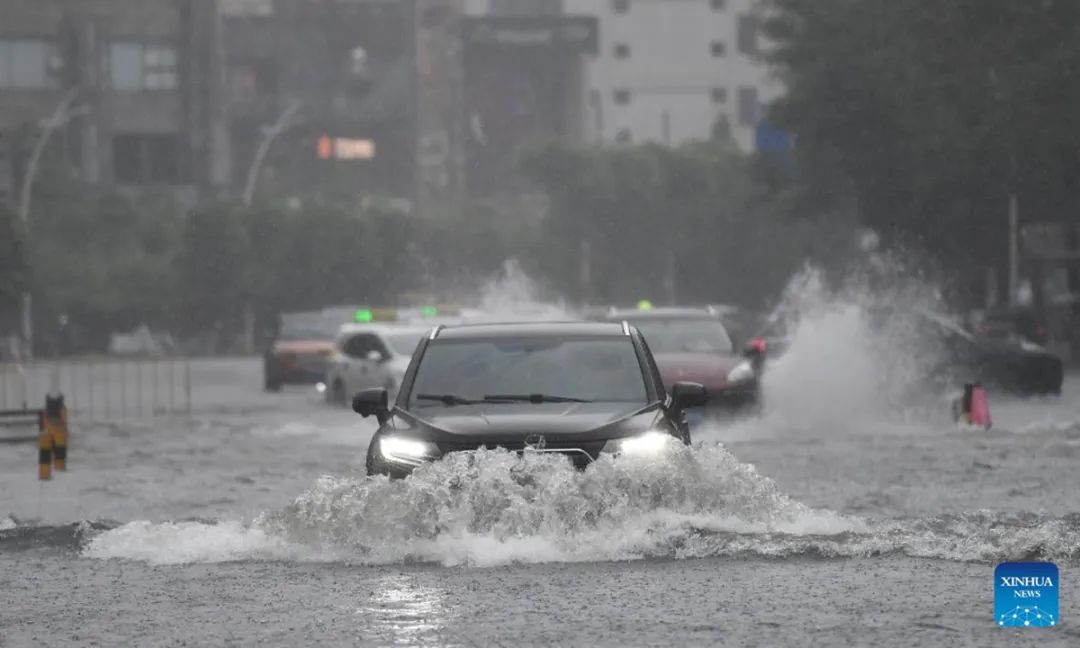
Typhoon Wipha, China’s sixth typhoon of the year, made landfall near Taishan in Guangdong Province at approximately 5:50 p.m. on Sunday evening, according to the National Meteorological Center (NMC). With maximum sustained winds of 33 meters per second near its center, the storm prompted immediate emergency responses across multiple regions. After landfall, Wipha weakened from a typhoon to a severe tropical storm, as reported by China Central Television (CCTV).
Emergency Response and Evacuations
The Guangdong provincial flood control headquarters deployed 10 working groups to key cities to oversee typhoon prevention efforts. Four cities—Zhuhai, Yangjiang, Jiangmen, and Maoming—along with 15 districts and counties, activated Level I emergency response, the highest alert level.
By 1 p.m. on Sunday, 669,162 people had been evacuated, including 12,036 from offshore areas and 657,126 from land-based regions. The Guangdong provincial meteorological observatory warned that the heaviest rainfall would occur from Sunday night into Monday, with heavy to very heavy rain expected in western Guangdong and southern Pearl River Delta cities.
Forecast and Movement
NMC forecasted that Wipha would move westward along Guangdong’s coast on Monday before entering the Beibu Gulf and heading toward Vietnam’s northeastern coast. Heavy to torrential rain was predicted in southern China, with localized rainfall exceeding 250–320 millimeters in parts of northern Hainan and Guangdong’s southwestern coast.
Transportation and Infrastructure Disruptions
In response to the typhoon, China Railway Guangzhou Group suspended multiple railway lines on Sunday and Monday. The Shenzhen-Zhongshan Link was fully closed, with reopening dependent on weather conditions.
By Saturday at 2 a.m., 523 fishing vessels had returned to port, while 1,482 offshore wind power workers, 9,272 fish farm workers, and 1,282 marine ranch personnel evacuated to safety. Additionally, 52 coastal scenic areas were shut down.
Preparedness and Rescue Efforts
The State Flood Control and Drought Relief Headquarters, in coordination with the Ministry of Emergency Management, raised the emergency response to Level III in Guangdong and Hainan, while maintaining Level IV in Guangxi. A working group was dispatched to Guangdong to assist local efforts.
The Guangdong Provincial Fire and Rescue Corps pre-positioned 14,203 personnel, 3,088 vehicles, 662 boats, and 66,491 pieces of rescue equipment in coastal cities.
Citywide Shutdowns
Zhuhai and Yangjiang implemented citywide suspensions of classes, business operations, production, and transportation. Shenzhen closed all parks at 6 p.m. on Saturday and opened indoor emergency shelters citywide.
Ongoing Threat and Future Outlook
Meteorologists warned that Wipha could make multiple landfalls in Guangdong, bringing sustained strong winds and heavy rain. Even after landfall, the storm would continue affecting Fujian.
Fujian Meteorological Observatory forecaster Chen noted that typhoon activity would remain heightened over the next 10 days, with potential new storms forming.






